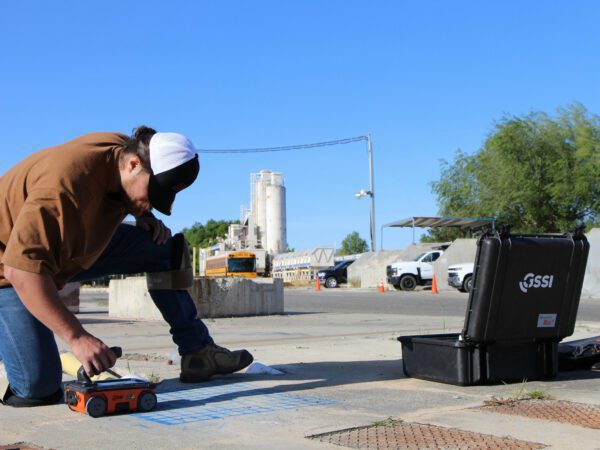Introduce the Transformative Power of Concrete Scanning in Maximizing Effectiveness and Security
Concrete scanning has actually arised as a vital device in the building sector, using unequaled benefits in enhancing project efficiency and guaranteeing safety standards. By making use of sophisticated technology, concrete scanning permits experts to see beyond the surface area, revealing surprise intricacies that might affect the structural integrity of a building. The transformative power of concrete scanning hinges on its capability to give real-time data and comprehensive insights, transforming exactly how projects are intended and performed. As we look into the intricacies of this cutting-edge method, a world of possibilities opens up, showcasing a new era of construction practices that focus on accuracy and security.
Significance of Concrete Scanning
Making sure the architectural stability and safety of building and construction tasks starts with the critical step of conducting detailed concrete scanning. Concrete scanning is a non-destructive approach made use of to detect and map subsurface aspects within concrete structures.
Additionally, concrete scanning assists in optimizing job timelines and budget plan by staying clear of unforeseen costs and hold-ups that might occur due to unanticipated obstructions within the concrete. Eventually, spending in comprehensive concrete scanning is a positive approach that improves both performance and security in building and construction jobs.
How Concrete Scanning Functions
Concrete scanning runs as an important tool in construction jobs by utilizing sophisticated technologies to detect and map subsurface aspects without creating structural damages. Ground Penetrating Radar (GPR) and Electromagnetic Induction (EMI) are two key methods utilized in concrete scanning.
Throughout the scanning process, the data accumulated is examined in real-time, allowing immediate identification of possible hazards or barriers beneath the surface. By employing these innovative innovations, concrete scanning dramatically minimizes the danger of pricey problems and injuries on building and construction sites.
Advantages of Concrete Scanning
Using sophisticated scanning modern technologies in building tasks offers a wide variety of benefits, enhancing both efficiency and safety and security on-site. One of the primary benefits of concrete scanning is the capability to find and locate ingrained items such as rebar, post-tension cords, and conduits precisely. By determining these elements prior to boring or cutting into concrete structures, the danger of unintended strikes is significantly minimized, avoiding possible injuries to employees and damages to the framework itself. Concrete scanning aids in planning and making a lot more properly, as it offers precise details regarding the place and depth of structural elements.

Case Research Studies: Concrete Scanning Success

In another instance, a construction business made use of 3D concrete scanning to evaluate the condition of maturing concrete frameworks in a historic structure. The comprehensive scans offered valuable understandings into the level of damage and assisted focus on maintenance initiatives effectively. By proactively attending to areas of issue identified via scanning, the business was able to prolong the life-span of the structure and make sure owner safety.
These instance research studies underscore the transformative power of concrete scanning in enhancing performance, precision, and security in building jobs.
Implementing Concrete Scanning in Projects
Carrying out sophisticated scanning technologies throughout construction jobs has actually come to be increasingly essential for enhancing precision and safety and security. By integrating concrete scanning into task preparation and execution, building teams can identify potential threats, such as rebar or post-tension wires, hidden within concrete structures. This proactive technique lessens the danger of mishaps, delays, and costly rework, inevitably bring about a lot more reliable task visit their website timelines and budget plans.
To execute concrete scanning successfully, task managers need to work together very closely with knowledgeable scanning professionals to identify one of the most appropriate scanning strategies for the specific task needs. Involving scanning specialists from the onset of a job allows the group to develop detailed scanning plans that deal with key areas of issue and ensure complete data collection.
In addition, incorporating concrete scanning right important link into regular project process can simplify decision-making procedures, as real-time check information gives prompt insights right into the problem of concrete structures - Concrete Scanning. This data-driven technique promotes notified problem-solving and enables teams to make adjustments promptly, cultivating a society of effectiveness and security throughout the project lifecycle

Conclusion
To conclude, concrete scanning plays a critical function in improving efficiency and safety in construction jobs. By making use of sophisticated technology to map and spot out underlying structures within concrete, this process helps to stop pricey mistakes, ensure architectural integrity, and minimize threats on website. With the capacity to uncover hidden components and supply exact information, concrete scanning proves to be a valuable tool for enhancing job results and maximizing total success.
Concrete scanning is a non-destructive technique utilized to identify and map subsurface aspects within concrete frameworks. Furthermore, concrete scanning aids in optimizing task timelines and budget plan by avoiding unanticipated expenses and delays that may develop due to unexpected obstructions within the concrete. One significant instance research includes a massive improvement task where concrete scanning played a vital duty in making sure job success.In another case, a building firm used 3D concrete scanning to examine the problem of aging concrete frameworks in a historical building. By integrating concrete scanning right into project preparation and execution, building and construction groups can recognize possible dangers, such as rebar or post-tension cable televisions, hidden within concrete structures.